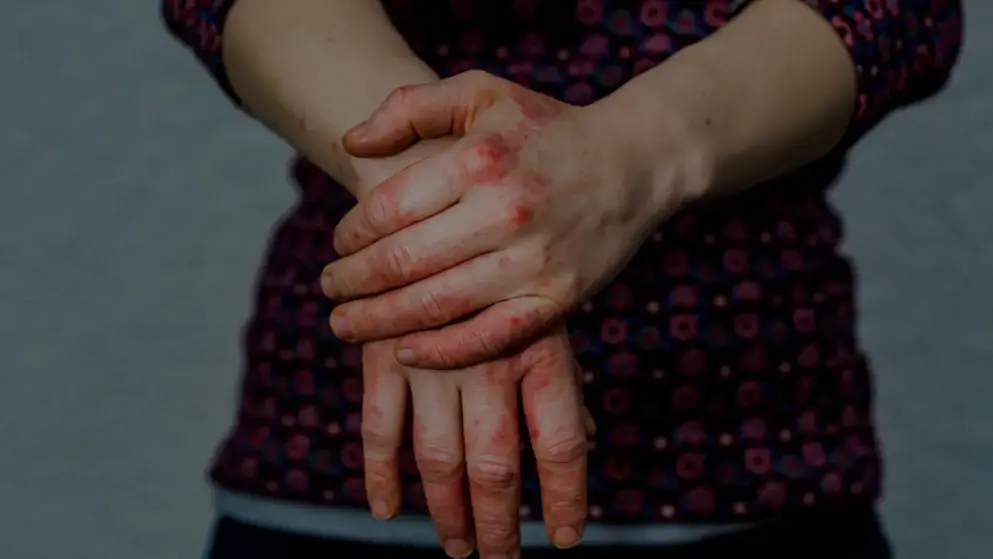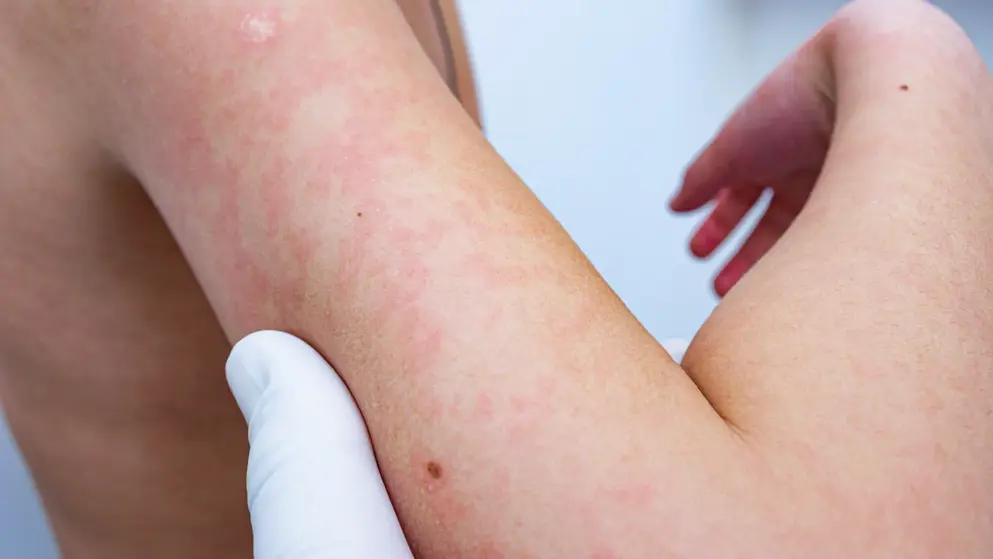
Atopic Dermatitis
Atopic dermatitis is a chronic inflammatory skin disease and the most common form of eczema. Patients with atopic dermatitis experience very itchy skin that appears red, scaly, and dry that can crack and bleed causing discomfort. Affected skin usually presents on elbows and knee joints but may also present itself just about anywhere on the body. Symptoms may appear similar to those of contact dermatitis or rosacea.
People with asthma and/or hay fever are more likely to develop this type of eczema. Atopic dermatitis runs in families with a 50% increased risk of developing symptoms if either or both parents have asthma, hay fever, or the skin condition itself. Diagnosis is part of a series of events known as the ‘atopic march’, where, over time, patients develop eczema, food allergies, allergic rhinitis, and asthma - in that order.
Common triggers are food allergens, detergents, and perfumes which set off the itch-scratch cycle; scratching of the skin causing the skin to break allowing allergens, dust mites, and microbes to cause a skin infection, which in turn elicits an immune system inflammatory response, and a heightened sensation to itch - and the cycle continues.
The European Academy of Dermatology and Venerology (EADV) guidelines suggest regularly bathing and applying moisturiser can be beneficial in helping manage symptoms. Additionally, not scratching or rubbing the affected area is also likely to help prevent any further inflammation. For some, the disease may subside with time but for others, the disease may reoccur and many children experience symptoms into adulthood.
To find out more, navigate through our Learning Zone pages where we have further information on atopic dermatitis, contact dermatitis, EADV highlights and rosacea.
Industry-sponsored resources
of interest
are looking at
saved
next event



